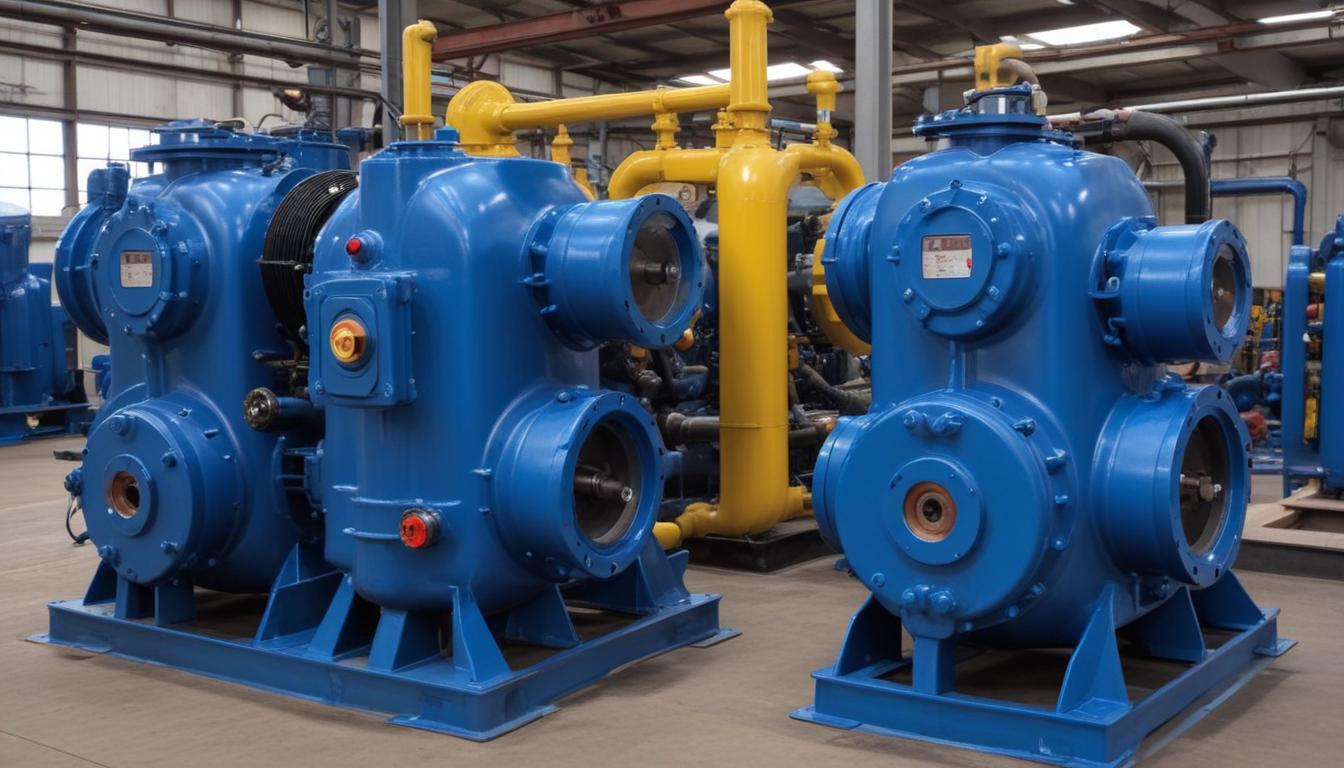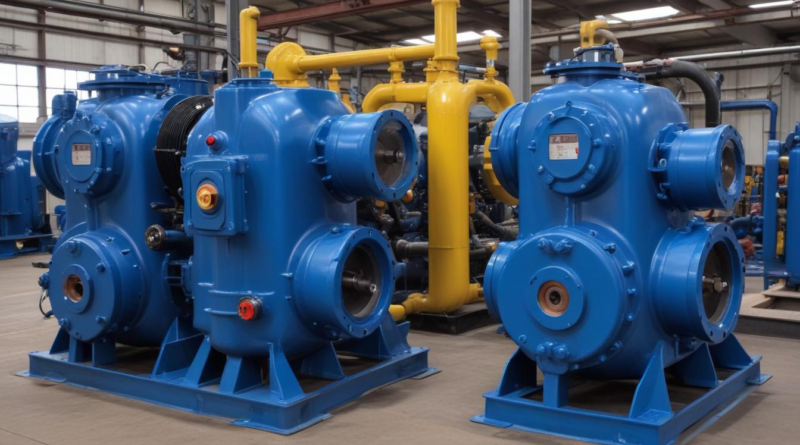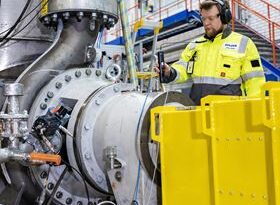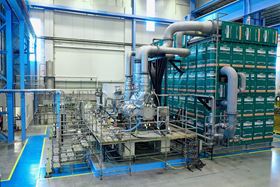the benefits of using pump automation
Pump automation significantly enhances operational efficiency by optimizing the performance of pumping systems. By leveraging advanced technology, automated pumps adjust in real-time to fluctuating demands, ensuring consistent flow rates and pressure levels. This dynamic adjustment minimizes energy wastage and extends the lifespan of equipment. Key aspects contributing to improved efficiency include:
- Automatic Start/Stop Functions: Pumps operate only when necessary, reducing unnecessary energy consumption.
- Variable Speed Drives: Adjusting pump speed based on demand leads to energy savings and decreased wear and tear.
- Real-Time Monitoring: Continuous tracking of system performance allows for immediate adjustments and swift identification of inefficiencies.
- Predictive Maintenance: Automated systems can predict potential failures before they occur, minimizing downtime.
- Optimized Workflow Integration: Seamless coordination with other automated systems ensures overall process efficiency.
Implementing pump automation also facilitates better resource management and reduces the need for manual interventions, which can be time-consuming and prone to errors. The integration of sensors and control algorithms enables pumps to operate at their optimal capacity, responding promptly to changes in the system’s requirements. This not only enhances the reliability of operations but also ensures that resources are utilized effectively, providing substantial benefits in terms of productivity and cost-effectiveness.
Efficiency Metrics Improvement:
| Efficiency Metric | Before Automation | After Automation |
|---|---|---|
| Energy Consumption | 15% higher | Optimized with variable speed |
| Operational Downtime | 5 hours/month | Reduced to 1 hour/month |
| Maintenance Costs | 20% higher | Lower due to predictive maintenance |
Overall, the adoption of pump automation technology leads to a more efficient, reliable, and cost-effective pumping system, delivering significant benefits across various applications.
cost savings
Implementing pump automation leads to substantial financial savings by reducing both operational and maintenance costs. The automation of pumping systems minimizes the need for manual oversight, thereby decreasing labor expenses and the likelihood of human error. Additionally, optimized energy usage directly translates to lower utility bills, providing immediate and ongoing cost benefits.
Key factors contributing to cost savings include:
- Reduced Energy Consumption: Automated pumps adjust their operation based on real-time demand, ensuring energy is not wasted on unnecessary performance, which significantly lowers electricity costs.
- Lower Maintenance Costs: Predictive maintenance enabled by pump automation detects potential issues before they escalate, reducing the frequency and expense of repairs.
- Extended Equipment Lifespan: By operating pumps at optimal levels, automation reduces wear and tear, extending the life of the equipment and delaying capital expenditures for replacements.
- Decreased Downtime: Automated systems ensure continuous operation with minimal interruptions, preventing costly production losses associated with equipment failure.
- Efficient Resource Allocation: Automation allows for better allocation of human resources to more strategic tasks, enhancing overall productivity and reducing labor costs.
Cost Reduction Metrics:
| Cost Category | Before Automation | After Automation |
|---|---|---|
| Energy Bills | 20% higher | Reduced by 15% through optimized usage |
| Maintenance Expenses | 25% greater | Decreased by 30% due to predictive maintenance |
| Labor Costs | Higher due to manual monitoring | Lower as automation handles routine tasks |
| Equipment Replacement | Frequent replacements needed | Extended lifespan reduces replacement frequency |
Furthermore, the scalability of pump automation systems allows businesses to expand operations without proportionally increasing costs. By integrating advanced technology, companies can achieve greater output with minimal additional investment, ensuring long-term economic sustainability. The initial investment in pump automation is often offset by the rapid return on investment through ongoing cost savings, making it a financially sound decision for organizations aiming to enhance their operational efficiency and profitability.
enhanced safety
Implementing pump automation significantly enhances safety within operations by minimizing risks associated with manual pump management and ensuring consistent performance under various conditions. Automated systems are equipped with advanced safety features that proactively address potential hazards, thereby safeguarding both personnel and equipment.
- Automated Shutoff Mechanisms: In the event of abnormal pressure levels or system malfunctions, automated systems can instantly shut down the pump to prevent accidents.
- Remote Monitoring: Automation allows for real-time monitoring from a safe distance, reducing the need for personnel to be in hazardous environments.
- Consistent Operational Parameters: Maintaining pumps within safe operational limits minimizes the risk of equipment failure or dangerous leaks.
- Alert Systems: Integrated alarms and notifications inform operators of any irregularities, enabling swift corrective actions.
- Compliance with Safety Standards: Automated systems can be programmed to adhere strictly to industry safety standards, ensuring regulatory compliance.
Safety Metrics Improvement:
| Safety Metric | Before Automation | After Automation |
|---|---|---|
| Number of Accidents | Higher due to manual intervention | Significantly reduced with automated controls |
| Response Time to Hazards | Slower, reliant on human reaction | Immediate, automated response |
| Compliance Incidents | More frequent due to human error | Fewer, with consistent adherence to standards |
Additionally, pump automation enhances safety by providing comprehensive data logging and reporting capabilities. These features allow for thorough analysis of incidents and the implementation of preventive measures, fostering a safer operational environment. The integration of technology in pump automation not only protects physical assets but also ensures the well-being of employees, making it an indispensable component of modern industrial safety strategies.
data-driven insights
 Leveraging advanced technology, pump automation systems collect and analyze vast amounts of data to provide actionable insights that enhance operational decision-making. These data-driven insights enable organizations to optimize their pumping systems, anticipate potential issues, and implement strategic improvements with precision.
Leveraging advanced technology, pump automation systems collect and analyze vast amounts of data to provide actionable insights that enhance operational decision-making. These data-driven insights enable organizations to optimize their pumping systems, anticipate potential issues, and implement strategic improvements with precision.
- Real-Time Data Monitoring: Continuous tracking of key performance indicators such as flow rates, pressure levels, and energy consumption allows operators to maintain optimal conditions and swiftly address deviations.
- Predictive Analytics: By analyzing historical and real-time data, automated systems can forecast potential maintenance needs or equipment failures, enabling proactive interventions that prevent costly downtime.
- Performance Optimization: Data analysis helps identify inefficiencies within the pumping system, allowing for adjustments that enhance overall performance and reduce energy usage.
- Enhanced Reporting: Comprehensive reports generated from collected data provide valuable insights for management, facilitating informed decision-making and strategic planning.
- Integration with Business Systems: Seamless data integration with other enterprise systems, such as Enterprise Resource Planning (ERP) and Supervisory Control and Data Acquisition (SCADA), ensures a holistic view of operations and supports cross-functional initiatives.
Data Utilization Metrics:
| Data Insight | Impact Before Automation | Impact After Automation |
|---|---|---|
| Maintenance Scheduling | Reactive, leading to unexpected downtimes | Proactive scheduling based on predictive analytics |
| Energy Efficiency | Limited visibility into energy usage patterns | Enhanced optimization resulting in up to 15% energy savings |
| Operational Insights | Fragmented data leading to incomplete analysis | Comprehensive data integration enabling thorough performance reviews |
The integration of data-driven insights into pump automation systems not only improves the immediate operational parameters but also supports long-term strategic initiatives. By harnessing the power of data, organizations can achieve greater transparency, enhance accountability, and drive continuous improvement across their pumping operations. This data-centric approach ensures that decisions are based on accurate, real-time information, thereby maximizing the benefits of pump automation and fostering a culture of informed, evidence-based management.
scalability and flexibility
Pump automation systems are inherently designed to support the growth and evolving needs of businesses by offering exceptional scalability and flexibility. As operations expand or diversify, automated pumping solutions can be easily adjusted or scaled to accommodate increased demands without significant overhauls or disruptions. This adaptability ensures that organizations can respond swiftly to market changes, technological advancements, or shifts in operational requirements, maintaining optimal performance and efficiency.
- Modular Design: Pump automation systems are often built with modular components, allowing for seamless expansion. Businesses can add or remove modules based on current needs, ensuring that the system grows in tandem with the organization.
- Flexible Configuration: Advanced control algorithms and programmable settings enable systems to be tailored to specific operational parameters. This flexibility supports a wide range of applications, from small-scale operations to large industrial processes.
- Integration Capabilities: Automated pump systems can integrate with existing infrastructure and other automated technologies, such as SCADA and ERP systems. This interoperability facilitates unified operations and data sharing across different platforms.
- Remote Upgradability: Many pump automation systems offer remote firmware and software updates, ensuring that the latest features and improvements can be implemented without physical modifications to the hardware.
- Scalable Data Management: As data generation increases with the scale of operations, pump automation systems can handle larger datasets and more complex analytics, providing valuable insights regardless of system size.
Scalability and Flexibility Metrics:
| Aspect | Before Automation | After Automation |
|---|---|---|
| System Expansion | Requires significant downtime and investment | Minimal disruption with modular additions |
| Configuration Changes | Time-consuming and labor-intensive | Quick and easily programmable adjustments |
| Integration with Other Systems | Limited compatibility and higher integration costs | Seamless integration with various technologies |
| Data Handling Capacity | Restricted by manual systems and limited storage | Scalable data processing and storage solutions |
The ability to scale and adapt is a critical advantage of pump automation, enabling organizations to meet current demands while being prepared for future growth. This scalability ensures that investments in pump automation technology remain valuable over the long term, providing continuous benefits as business needs evolve. Additionally, the flexibility of automated systems allows for customization to meet specific industry requirements, enhancing the overall effectiveness and efficiency of pumping operations. By leveraging scalable and flexible pump automation solutions, businesses can maintain a competitive edge, ensuring that their pumping infrastructure remains robust, adaptable, and capable of supporting sustained operational success.




